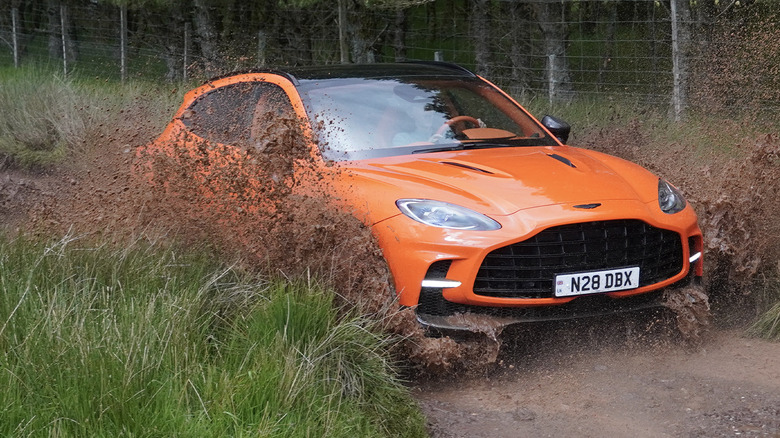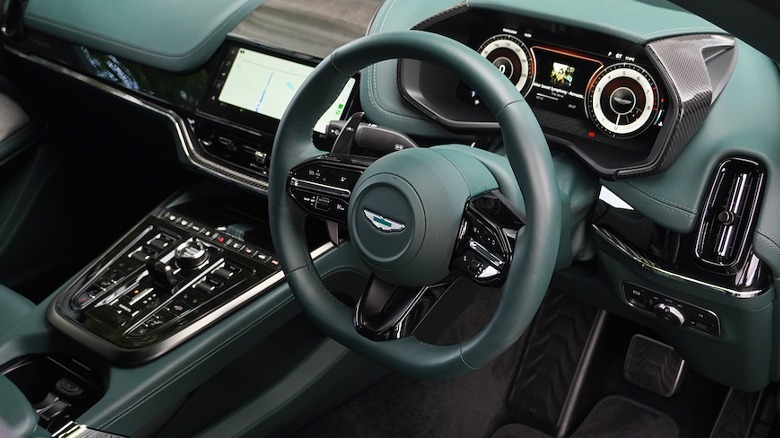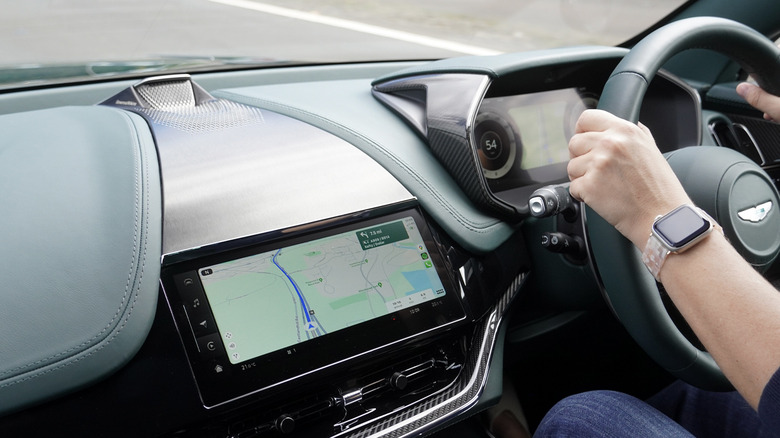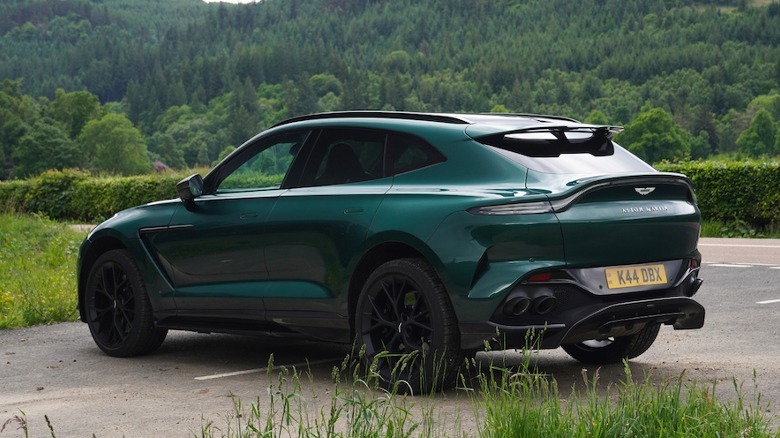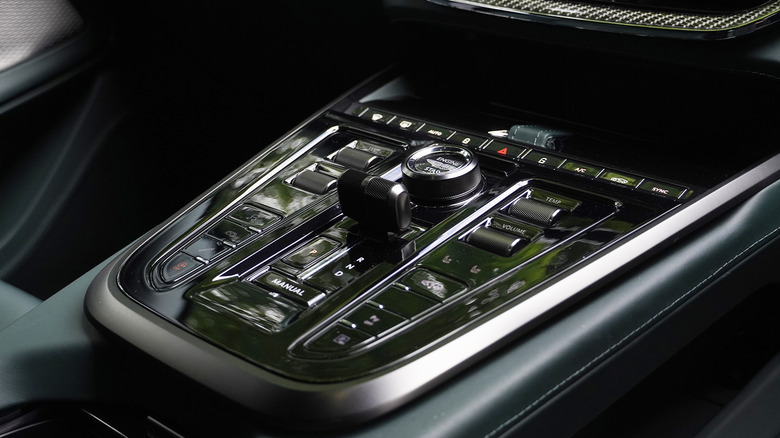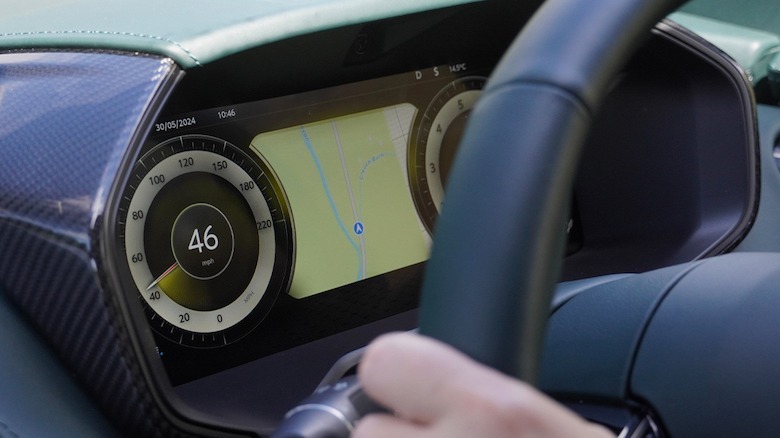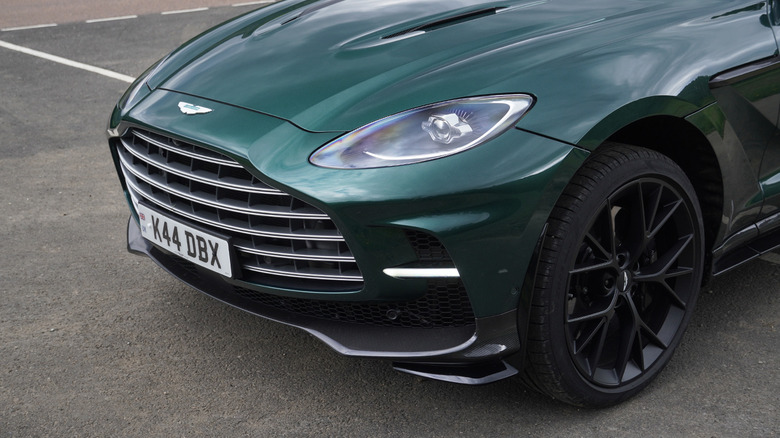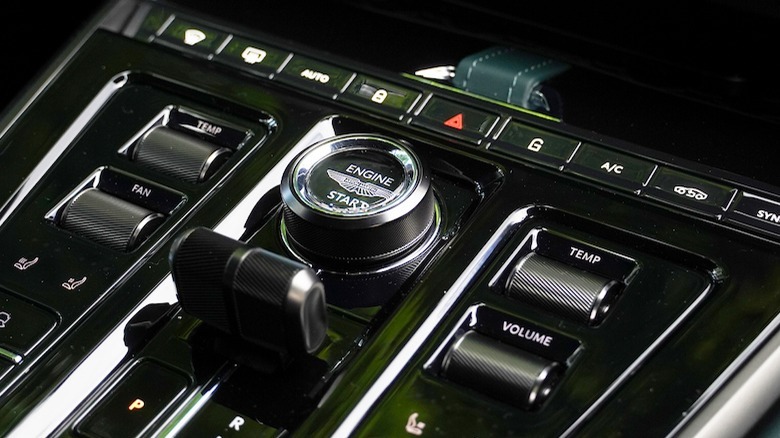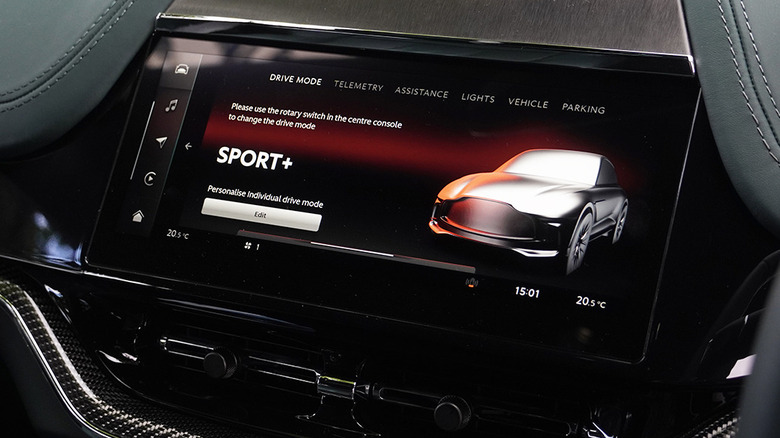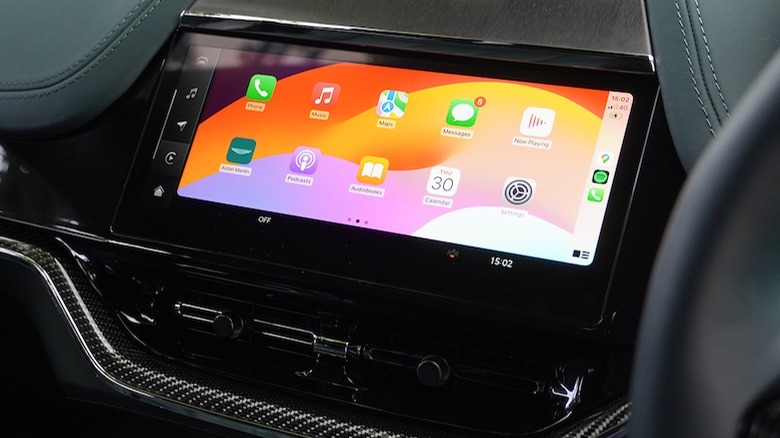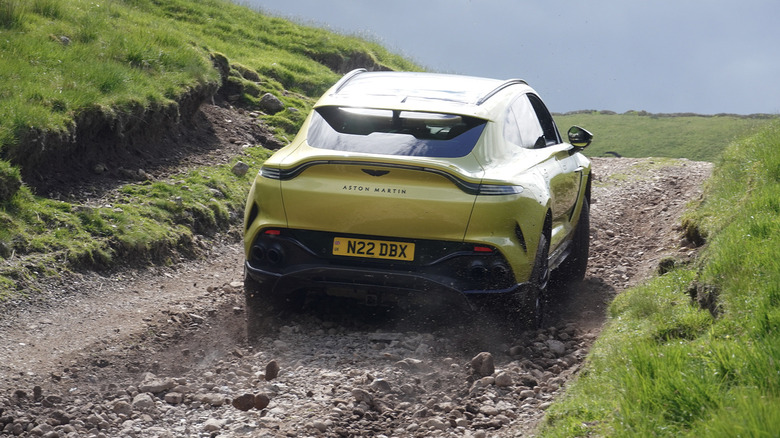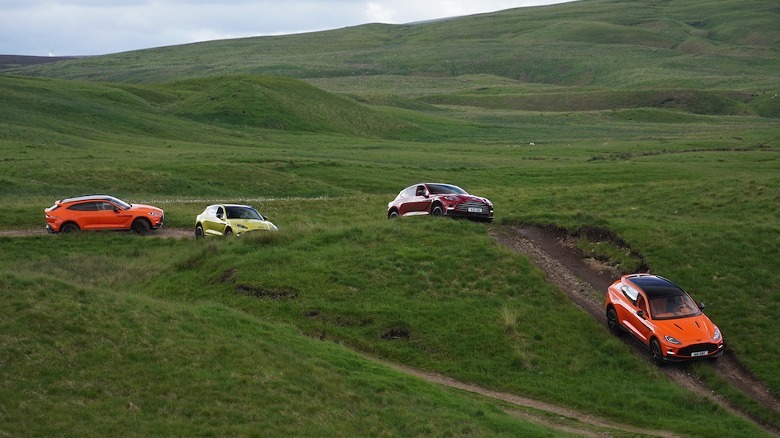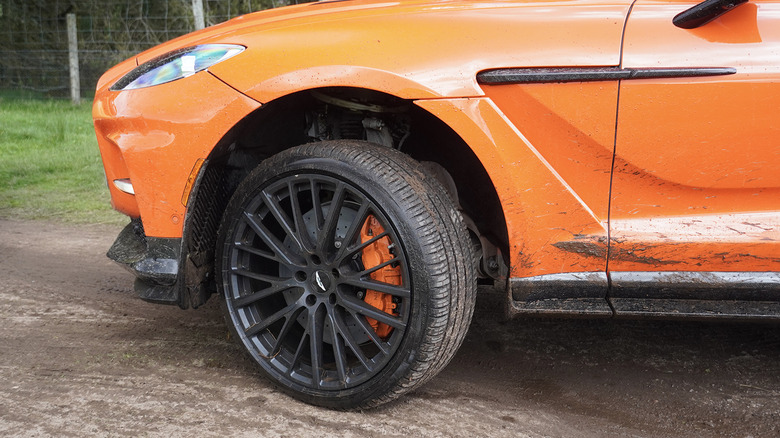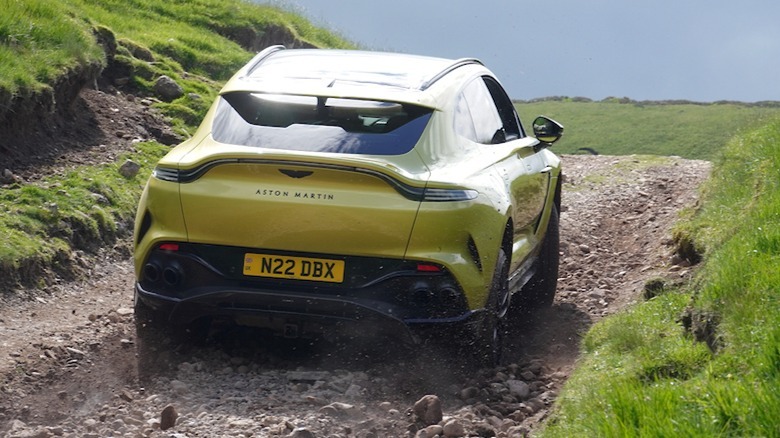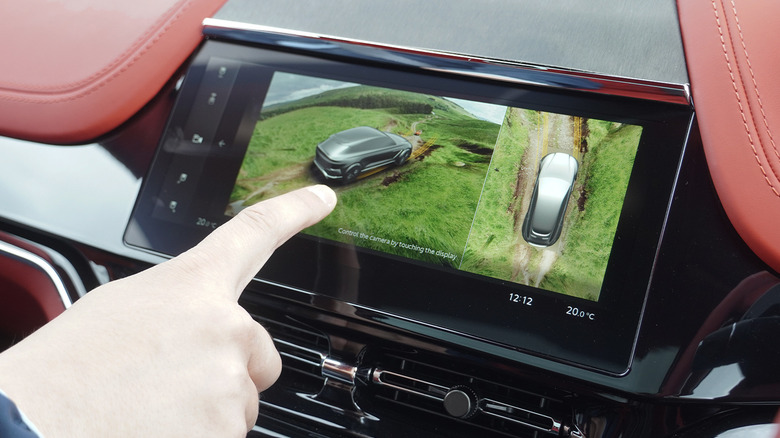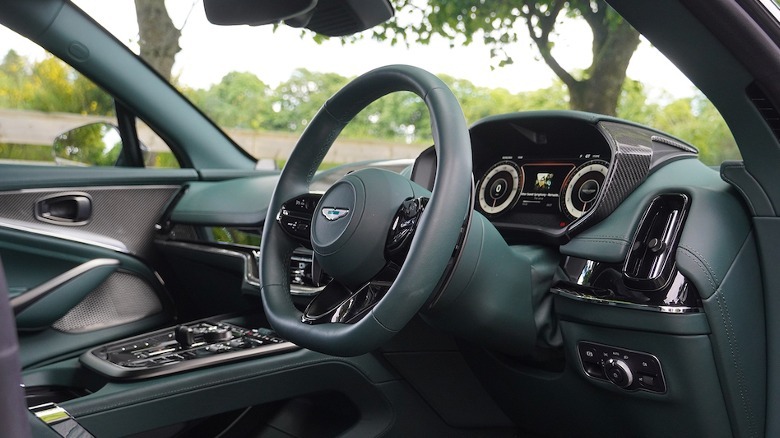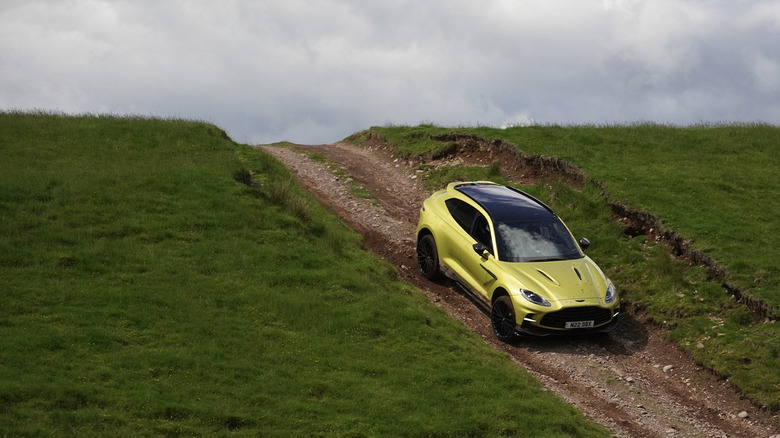Aston Martin DBX707: The 2025 Updates That Make It Super SUV Royalty
From afar, the new 2025 Aston Martin DBX looks identical to previous model years. Beneath the svelte skin lurks the same, powerful, twin-turbocharged V8 engines, including the mind-bogglingly quick 707 package. But don't be fooled, because model year 2025 brings big changes to Aston's most popular offering, helping this super SUV keep up with the competition in entirely new ways.
The most critical update for most buyers will likely be a welcome improvement to the DBX's interior design, with a revamped dash and center console that facilitate the transition to a new electronics suite and infotainment touchscreen developed in-house for the first time. Another less noticeable, yet even more substantial change will perhaps make an even bigger difference for those few customers who care about this SUV's sporty dynamics: Aston's chassis engineers also made subtle yet significant revisions to the suspension and steering to improve both daily drivability and performance potential.
So naturally, to show off the technological developments, Aston recently flew select media all the way to Scotland to take one of the world's most expensive SUVs off-roading. Talk about a surprise coming straight out of left field, and the kind of offer nobody can refuse, even if I jumped back on a few jets to Edinburgh figuring all the while that the adventure might lean more toward soft-roading than anything else.
Revisions to the lineup's breadwinner
To reach the kind of bleak Scottish landscape where a DBX might ever venture off asphalt, first our ragtag group of kilt-less journalists and influencers needed to escape Edinburgh. The narrow Scottish roads presented an ideal opportunity to experience the DBX's updates, and how they can boost such a paramount portion of the British firm's business. In fact, the DBX already makes up more than half of Aston's total sales, and that income seems all the more significant given that the DBX rides on a unique chassis not shared with a single other vehicle.
Development of that unique chassis sets the DBX apart from much of the super SUV segment—just think of the Lamborghini Urus, Porsche Cayenne, Audi SQ7, and Volkswagen Touareg as an example of how other automakers amortize the cost of developing the DBX's competitors. But doing so allowed Aston to bake in the longest wheelbase among the competition, maximizing the interior volume that stood out in the first DBX707 I ever drove about 18 months ago.
That SUV bordered on minivan levels of spaciousness—an impressive feat given the stellar exterior styling—but unfortunately the ride quality approached minivan levels of mediocrity, as well. And then throw in an unfortunate touchpad-based infotainment system, highly questionable push-button gear selectors with "D" for drive as the single further button from the driver's seat, plus a suspiciously lurchy transmission. Back then, my impressions wound up far from positive.
Big changes, visible and invisible
The newly updated DBX aims to address just about all of my nits to pick, especially the electronics suite that Director of Product Strategy Alex Long referred to in Scotland as "really, the DBX Achilles heel." Given the customer base that buys six-figure SUVs, updating the outdated infotainment system fit into Executive Chairman Lawrence Stroll's vision for the company in a big way. Doing so required years of work, however, so the results go far beyond simply switching to a true touchscreen.
The DBX's entire digital architecture arrives new for 2025. Not just the touchscreen, now supporting wireless Apple CarPlay, but the advanced driver-assistance systems (ADAS), too. A physical gear selector lever and new climate control switchgear sit atop a reworked center console. New speakers flow neatly into the makeover, which prioritizes horizontal lines more than the outgoing dash.
The new buttons control new ones and zeroes for the electronic power steering's programming, which now prioritizes ease of use in GT mode but reduces assist in Sport and Sport+ modes to improve precision and response. A new suspension controller unit revises the tuning for the eight-volt active sway bar system, to increase maximum compliance along with unlinked compression and rebound dampers, as well as the triple-chamber air springs. The system can now firm up the sway bars and dampers more quickly when required, for better dynamics based not just on the selected drive mode, but also driver input.
Escape from Edinburgh
Pulling out of Edinburgh, I noticed the suspension revisions immediately, even if the gargantuan 23-inch wheels still clunked and pranged off a series of unavoidable potholes. The DBX707 still rides so flat in terms of side-to-side body roll that the mind truly balks, but the additional cushion for vertical wheel travel makes a noticeable difference, both while absorbing hard impact compression but also allowing the entire unibody to pitch forward and back in more classic SUV style. The sensation thereby communicates more of what the chassis, drivetrain, suspension, and wheel/tire combo are up to—even if we're a long way from the bucking squats of a Lamborghini Urus (airsprung, non-Performante variant).
I also picked up a significant improvement in the nine-speed automatic transmission's shifting, despite the fact that Long never mentioned anything about the gearbox. Turns out, when I later quizzed an engineer, that again, the unique use of a DBX-specific nine-speed wet-clutch transmission to allow harder launches than the dual-clutches or torque converters of the competition therefore required additional effort at Aston over the past few years.
Specifically, the tolerances and valving of each gearbox can vary minutely, so every few months the powertrain team revisits the transmission control software to optimize shifting for any changes in production variance. So, even without specific differences for model year 2025, those incremental updates clearly helped to smooth out the shifts during the course of normal driving.
The one thing I can't say made a huge difference? A new exhaust system, which Aston hoped might emphasize the burly twin-turbo V8 under the hood. Suffice to say, the 4.0-liter engine sounded good then and still sounds good now. Maybe the neighbors will notice more from next door than I did from the driver's seat.
Playing with a new touchscreen
Now, admittedly, I flew halfway around the planet mostly for the infotainment update. The rest of the more performance-oriented revisions came as an added, unexpected bonus. So over the course of the next hour-plus, as we made our way toward the estate where we would do the actual off-roading, I fiddled with buttons and swiped through menus and generally tried my darnedest to find flaws in the digital system.
The screen itself integrates well into the dash, with snappy responses to middleweight pushes and swipes of the finger. Apple CarPlay, of course, just does its thing—though strangely, when using Google Maps for directions, the configurable gauge cluster's navigation screen stays on Apple Maps. Aston reps on hand confirmed that, as the first model of any brand to use CarPlay in the gauge cluster, the DBX required certain sacrifices to Apple's infamously cantankerous demands. One of them being that Google Maps simply will not transfer over, though a software workaround overlay on the way via an over-the-air update may well fix the situation soon.
The native UI–shared with other new models, like the 2025 Vantage–also works fairly well, via either the new switchgear or through various menu options. Every new infotainment system takes a certain level of adjustment, which I typically measure via the frustration building up in my stomach, but that old acidic burn never appeared in the DBX. My largest complaint almost seems silly: the slightly dark screen on certain pages required me to lean over and block out the glare of sunlight, with sunglasses on or off, and I never figured out how to adjust the display's brightness.
Low-pros in the dirt
By the time we arrived at Gleneagles estate for the off-roading, I'd stopped fiddling and started focusing on the joy of cruising through the surrounding scenery. Thought not quite at the level of spectacular highland vistas further north, the rolling countryside still delivered stunning lochs amid the occasionally steep valley, everything damp and verdant from the previous days' rainfall. And on a distant portion of the estate, surely those chunked-up rocky roads and water crossings weren't a part of our plan for the day, right?
Guess again! Despite switching us over to a fleet of left-hand-drive DBX707s for the off-roading experience, Aston purposefully left us on the optional, larger 23-inch wheels (versus the standard 22s). Only the switch to Pirelli Scorpion all-season tires, versus the P Zeros on the road cars, hinted at any level of fun ahead. Or, I expected, as much fun as can be expected from a six-figure super SUV running low-pros in the dirt...
Guess again, again! I immediately needed to throw all of my preconceived notions out the window. First up, we set the drive mode to Terrain and let the air suspension raise by an additional 45 millimeters (1.77 inches). That number may sound minimal, but on a DBX, the gap between fender and tire now bordered on cartoonish. Terrain mode also tells the drivetrain to set additional preload for the center and rear diff, preventing as much wheelslip as possible while sending more power rearward.
Doing our darnedest in the DBX
These DBXs also wore a set of fairly lightweight skid plates to prevent any serious damage, but my engineer co-driver pointed ahead straight at a long puddle of mud that looked about a foot deep and told me to gun it. Okay, then. Spraying water and grime everywhere, we rumbled through maybe 20 feet of the brackish water, hearing and feeling some crackling from rocks as bashes and jolts filtered up through the suspension and steering. Another hundred yards along the trail and we found an even deeper mud pit, requiring a solid descent and slow ascent to clear through. This time I worked down more patiently, then powered up out of the hole with ease despite some spin in the mud from the Pirellis.
We left the lowland behind and traversed up onto small knolls, mostly on smooth graded dirt but occasionally, up seriously rocky portions of trail littered with softball-sized stones that spun and sprung about underfoot, smaller pebbles ricocheting left and right, with some tire smoke and audible braking action from the ABS and traction control coming into play. A couple of drivers lost momentum and needed to back up to get a running start, especially once the trail deteriorated further from multiple 707-horsepower (DIN) SUVs doing their worst in the developing ruts.
Tech and capability in one stellar package
That's right, a running start at a hillclimb in an Aston Martin—get over it, literally. And over the crest of one hill, a complete lack of visibility down a steep descent provided the perfect opportunity to play with Aston's new, nifty 360-degree camera, which can rotate viewing angle around the car by wiggling a finger around on the touchscreen. One eye on the screen, I eased over the knuckle and slip-and-slid down the hill, carbon-ceramic brakes screaming from the low temps and the dirt and the water crossings. If this were my DBX707, that sound might put my hair on end.
But the point, as Aston reps continuously emphasized even as we demonstrated this super SUV's capabilities beyond a reasonable doubt, is that absolutely zero DBX owners ever do anything nearly anywhere even close to as difficult as this.
Of course not, but the DBX707, suprisingly, can still do the stuff! As we packed up and headed back to Edinburgh, my mind continued to process that incongruous fact. Imagine a DBX on the smaller wheels, with knobbier tires—though true all-terrains don't come in a size that will work, and the wheel can't go smaller due to the brakes. Rally racing a DBX, in classic Mini Cooper style but with all the power in the world. Now there's an idea that might bring more customers toward Aston's money maker.
Aston's business centers around improving the DBX
Regardless of true off-road ability, the DBX definitely needs to draw in more customers—either as conquests from the competition or to help sell the admittedly less practical sports cars—and not just to pay for the Formula 1 team. Aston Martin as a brand aims to expand beyond the car stuff alone, after all, if the divestiture into Miami residences signals at future strategy.
The new infotainment system should help in that regard, making the DBX more approachable for the mainstream digitized super-SUV buyer. And for those few who do prize the driving dynamics of Aston's sports cars and grand tourers, meanwhile, the suspension and steering revisions should help with any comparisons versus the sportier of today's super SUVs: Lambo's Urus, the Cayenne Turbo GT, or the Ferrari Purosangue, as a few examples.
Little surprises I kept track of throughout our day in Scotland hint at the effort that went into the update, from the tactile switchgear (especially the gear selector tab), and the fact that the wireless smartphone charger even works shockingly well. Clearly, this model year rollover represents more than just a facelift. Instead, the goal for Aston Martin is to have every car available at the dealer occupying the same exact level of technological prowess when the new DB12, Vantage, and forthcoming V12 flagship all hit sales floors alongside the updated DBX later this calendar year. Doing so will help the banner British automaker try to remain as independent as possible from the kind of decision-making that stems from oversight by the Geely corporate conglomerate, thereby keeping the Aston that enthusiasts everywhere know and love alive further into the foreseeable future.
